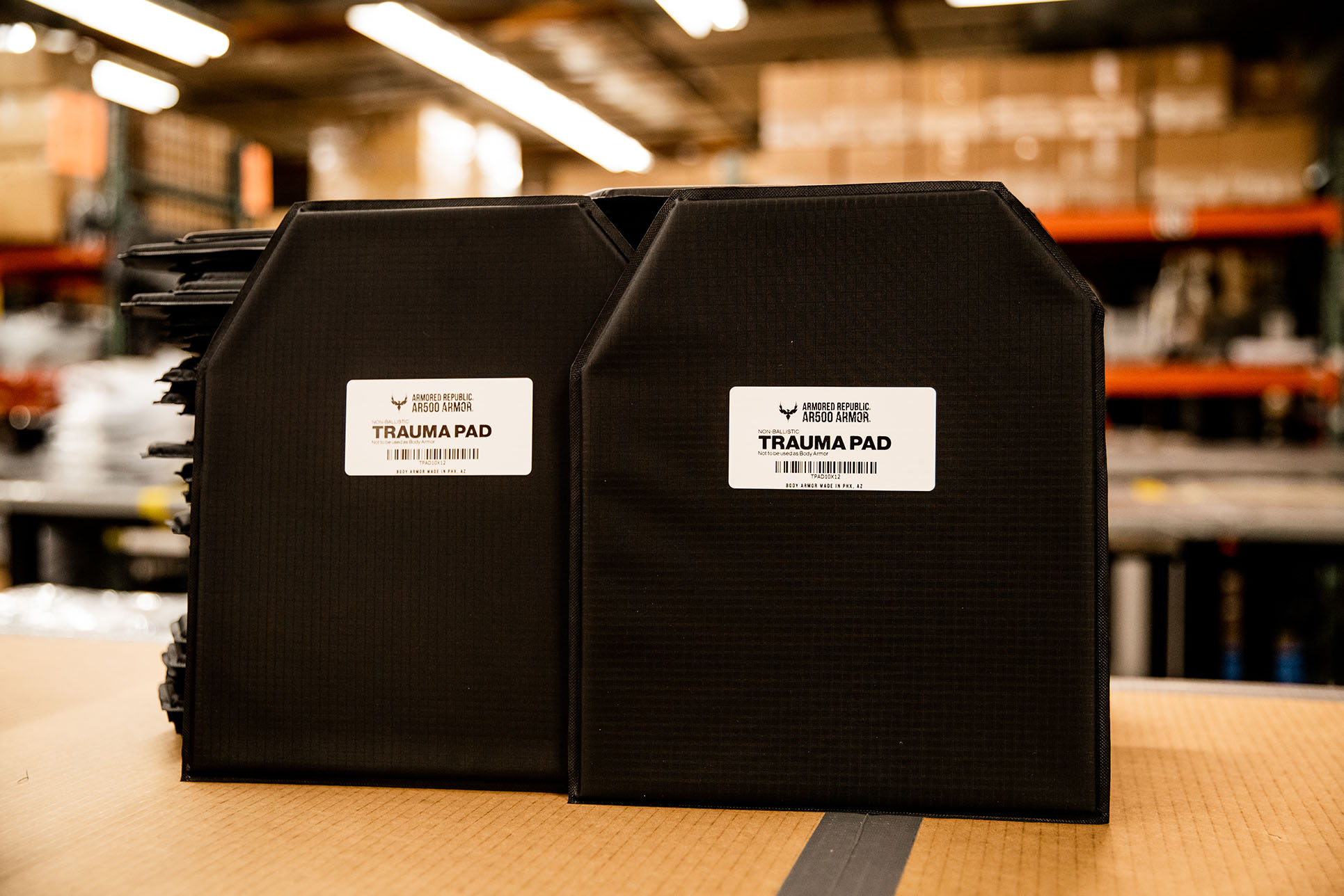What are trauma pads made out of?
Trauma pads are made from non-Newtonian foam layers that solidify instantaneously upon impact. This creates a larger, rigid surface area that absorbs much of the energy which in turn decreases energy transfer to the body. This can make an enormous difference in the event you take a bullet while wearing your body armor.

For any quality armor manufacturer, a trauma pad shouldn’t be necessary to meet the National Institute of Justice (NIJ) criteria for pistol and rifle-rated armor. But that doesn’t mean they don’t serve a very important purpose.
View the Armored Republic's trauma pad.
Do trauma pads offer ballistic protection?
A trauma pad is not bullet resistant. You wear it to reduce and disperse the bullet’s energy beyond what the vest or armor plate is capable of on its own. They offer no increase in ballistic protection but do soften the blow to your body. And this is not a small detail. Different types of body armor will receive that energy and react in different ways.
Soft body armor is made up of aramid fibers and other materials designed to “catch” the bullet- spreading the projectile’s energy over a larger portion of the ballistic material. While a ballistic vest can prevent penetration, it (and therefore the user) still absorbs the bullet’s energy. So even if the vest stops the projectile, the energy behind it still can have enough force to cause blunt force trauma to the wearer.
This transmitted impact energy is sometimes called the “backface signature” or “backface deformation,” and is measured in millimeters. U.S. NIJ body armor standards allow for 44mm (1.73 inches) of backface signature, which is enough to cause serious injuries such as broken ribs, serious bruising, or damage to internal organs.
The video below shows an extreme test of Level IIIA armor being shot with and without a trauma pad and the resulting backface deformation. We shot it with a 9mm round that is traveling nearly 2,000 feet per second- well above the NIJ Level IIIA specifications. Backface deformation was 22.19mm without the pad and only 14.66mm with the pad, a reduction of more than 30 percent.
You should wear a trauma pad in conjunction with and behind your body armor. Properly wearing your trauma pad should result in mitigating backface deformation and reducing the felt force through your armor.
Do I need a trauma pad if I’m not running steel armor?
There is a misconception that ceramic armor doesn't need trauma pads and steel armor does. That’s inaccurate. Since steel armor has less backface deformation than ceramic and polyethylene, the need for trauma pads would likely be more applicable to ceramic armor. Trauma pads are a good idea no matter which material or level of armor you happen to have.
Are trauma pads worth it?
Yes, here at Armored Republic we always recommend trauma pads (even for ceramic plates). They decrease energy transfer and backface deformation on any armor system, make taking a round much more bearable, and can substantially lower the risk of severe injury after impact.
Additionally, some plate carriers do not have padding and can benefit from the additional comfort of adding a trauma pad set. Putting on padless carriers with hard rifle plates can be painful if you are not careful when putting on your plate pocket atop and over your head.
The alternative to using a trauma pad is to have a vest with thicker padding, which can be bulky and costly. The reason trauma pads are preferable is that they can be sized just right to cover vital organs. This means your rig will be less expensive and lighter weight overall.
How big is a trauma pad?
There is no one-size-fits-all option for trauma pads. Common sizes include:
- 6” x 8”
- 9.5" x 6"
- 9" x 9"
- 10" x 12"
- 11” x 14”
- 11” x 15”
The size trauma pad you select may depend on several factors:
- Which parts of your body do you want to cover most
- The size of the armor you’re pairing it with
- The weight you want your set-up to be
- Your overall budget
As always, it comes down to your personal preference.
Conclusion
All Armored Republic plates perform very well as standalone configurations in backface deformation testing. Even so, we always recommend wearing trauma pads. The non-Newtonian foam layers do not provide added ballistic protection, but they absorb energy that could otherwise impact your vital organs.